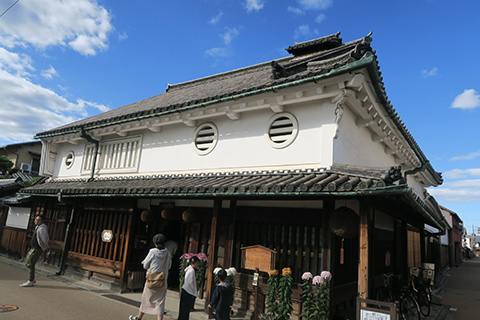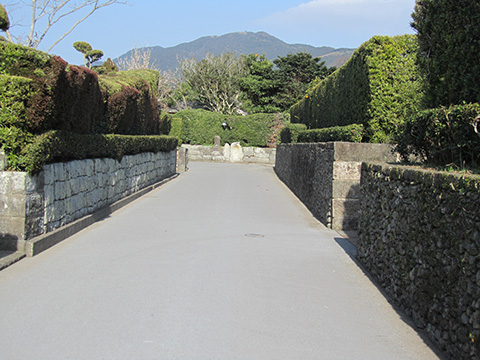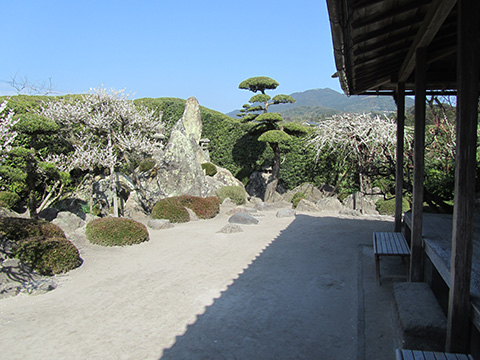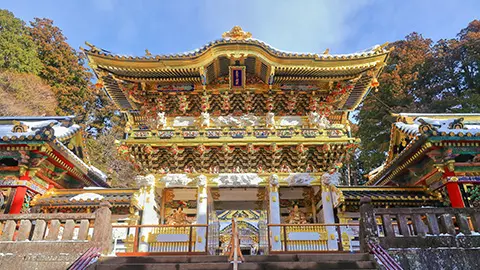VOL.196 SEPTEMBER 2024
JAPAN’S ENJOYABLE PUBLIC AQUARIUMS
[Discovering Japan Through the Eyes of Japanese Influencers] Enjoy Old Japanese Streetscapes in Imai-cho and Chiran Fumoto

Photo: ONO Kenkichi

ONO Kenkichi is a professor at Osaka University of Tourism specializing in garden history and cultural heritage preservation. In this month’s issue, he explains us about two of Japan’s attractive townscapes, Imai-cho and Chiran Fumoto.
Many old townscapes remain in various parts of Japan. The look of each town varies greatly depending on its character and origins. For example, there are monzen-machi,* shukuba-machi, (post towns), and shoka-machi (merchant towns). This article introduces Imai-cho, both a jinai-machi (a town of the Age of Civil Wars built within temple grounds) and a zaigo-machi (a town with a thriving business located at a countryside), and Chiran Fumoto, a buke-machi (samurai residential area).
The area of Imai-cho, located in Kashihara City, Nara Prefecture, runs about 600 meters east to west and 310 meters north to south. Nine of its buildings, including the main hall of Shonenji Temple and the Imanishi Family Residence, have been designated as important cultural properties. In addition, about two thirds of the roughly 760 buildings in the town are traditional structures that contribute greatly to the town’s historic scenic beauty**. The history of Imai-cho begins in the first half of the 16th century during the Age of Civil Wars, when it was an armed temple town (jinai-machi) surrounded by a moat and earthen mounds.
From the 17th century onward, during the Edo period, the town flourished as a zaigo-machi, a center of commerce and industry in a rural area. In the late 17th century, with its flourishing financial industry, the town had a population of 4,000, in 1,000 households, reaching such a peak that it was said, “Yamato*** no kin wa imai ni shichibu” (Imai has most of Yamato’s gold). Later, the town showed signs of decline, but residents have organized to strive for the disasters such as fire protection and otherwise carefully maintain it for hundreds of years.
Today, the town has been eliminating utility poles**** and earth-coloring its roads, letting visitors feel as if they were taking a step back in time to enjoy a stroll through an old Japanese town. In addition to the 17th century buildings like Shonenji Temple main hall and the Imanishi Family Residence (reservation required to visit), I recommend stopping by the former Kometani Family Residence, as well as the Kawai Family Residence, which still operates a sake brewing business. These residences are open to the public free of charge.

Photo: ONO Kenkichi
Chiran Fumoto, located in Minami-Kyushu City, Kagoshima Prefecture, was one of 113 samurai towns with the name fumoto (“foothill” in the general meaning of Japanese) in the area that was once home to the Satsuma clan, which ruled present Kagoshima Prefecture from the 17th to 19th centuries, and where samurai warriors were concentrated. The town layout of Chiran Fumoto is well preserved, and it clusters around an okariya clan office. It also has a sansaro three-forked road to prepare against enemy attacks, a feature unique to samurai towns. The samurai residences and their external elements and gardens are extremely well preserved, and seven of the gardens have been designated as national places of scenic beauty. Among the seven gardens, just one features a pond prominently, whereas the rest are designed as dry landscape gardens*****. They have unique designs that include a large assembly stone with a small stone pagoda placed on it. Some see the influence of Ryukyu and Chinese gardens in this unique design. With utility poles being removed and earth-coloring added to the pavement, you can enjoy strolling around Chiran Fumoto as if you were a Satsuma samurai. Of course, the seven gardens designated as places of scenic beauty are also must-see.

Photo: ONO Kenkichi

Photo: ONO Kenkichi
* A town formed around a large temple or shrine that attracts many pilgrims, where people associated with temples and shrines, craftsmen, and merchants who deal with visitors live.
** An environment where a city area of high historical value becomes one with the activities of its inhabitants
*** Former country name of present Nara Prefecture
**** Removing utility poles and wires from roads by installing power lines underground and other means
***** A style of Japanese garden that symbolically expresses a natural landscape without using water
ONO Kenkichi
Professor at Osaka University of Tourism. Honorary fellow at Nara National Research Institute for Cultural Properties. Doctor of Agriculture (Kyoto University). Author of Iwanami Nihon Teien Jiten (“Iwanami Japanese Garden Dictionary”) (Iwanami Shoten, Publishers, 2004), Nihon Teien – Kukan no Bi no Rekishi (“Japanese Gardens: History of the Beauty of Space”) (Iwanami Shinsho / Iwanami Shoten, Publishers, 2009), Nihon Teien no Rekishi to Bunka (“History and Culture of Japanese Gardens”) (Yoshikawa Kobunkan, 2015), etc. Gives lectures on Japanese gardens and tourism all over the country.![]()
By ONO Kenkichi
Photo: ONO Kenkichi

